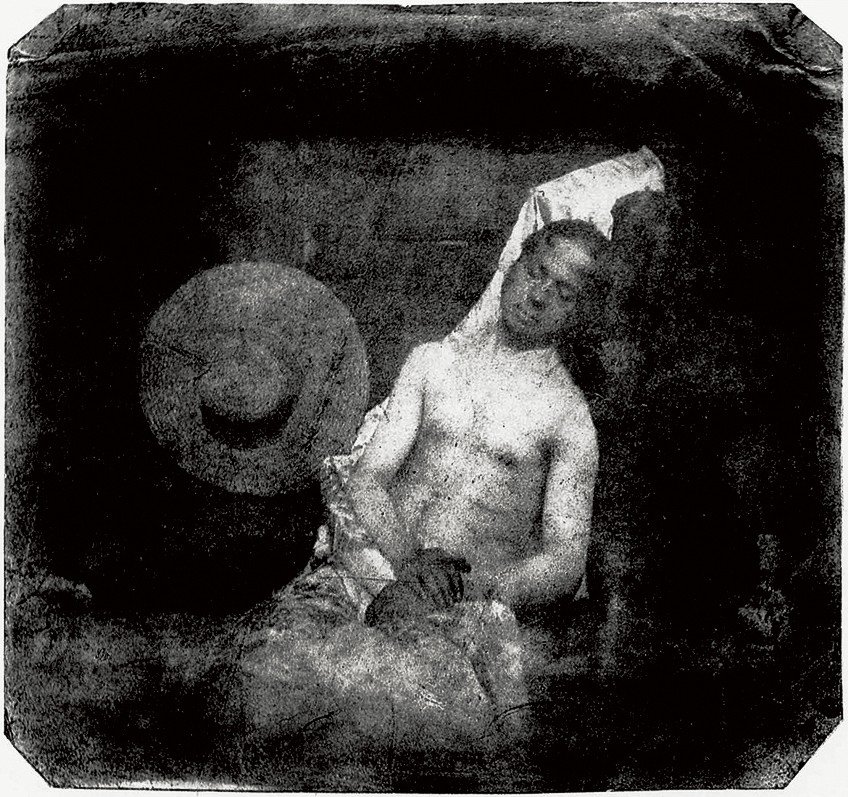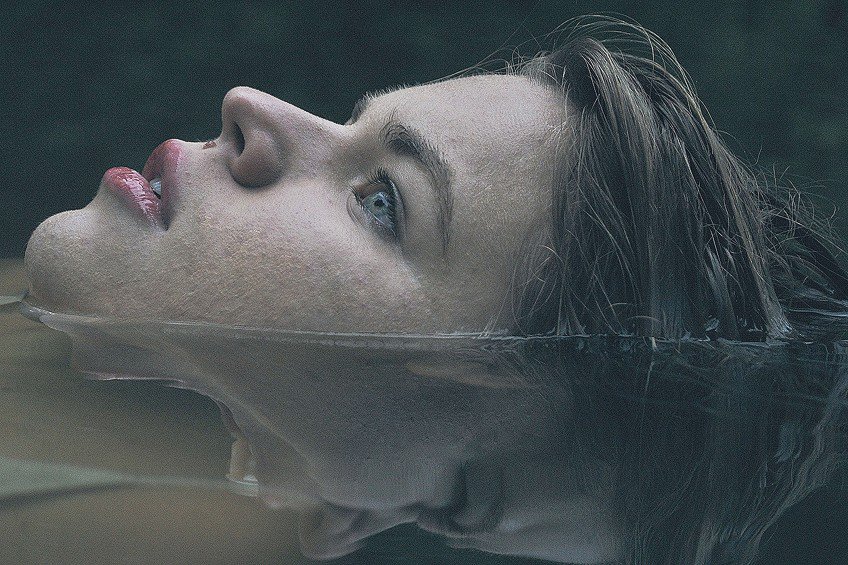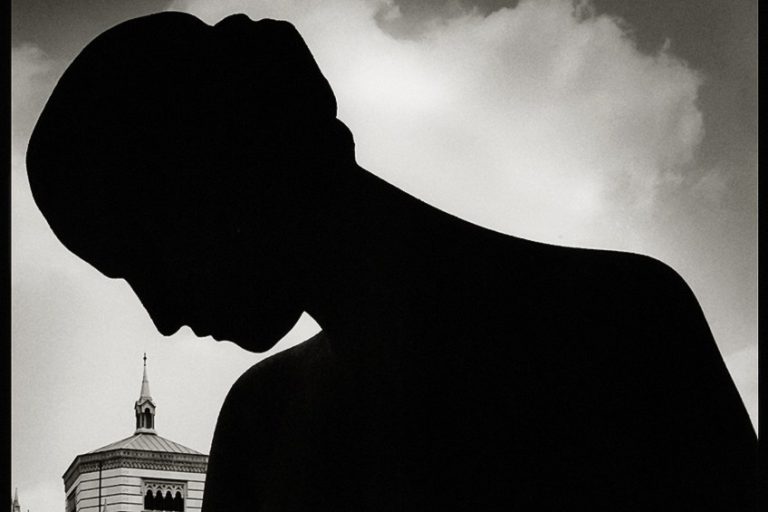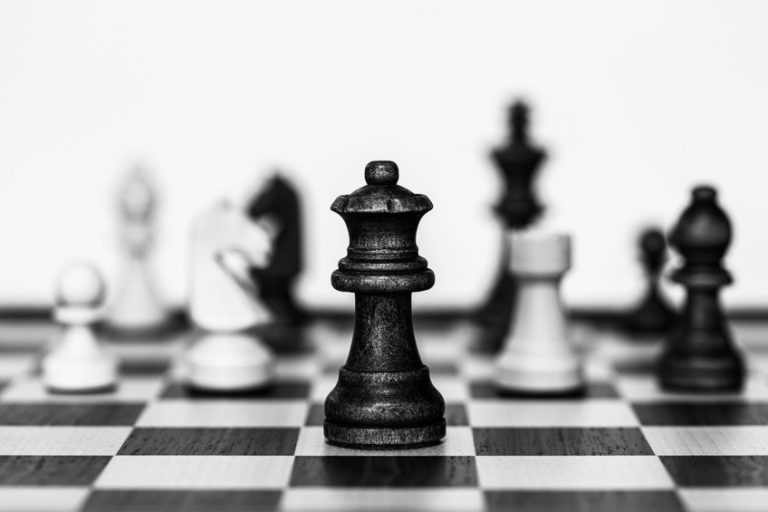Conceptual Photography – The Story Behind the Shot
What is conceptual photography, and can anyone practice it? Images are one of the easiest forms of communicating otherwise complex topics and themes without the need for a specific language. However, there are certain techniques and approaches to learn when trying to produce conceptually driven photography. In this article, we will unpack the definition of conceptual photography, as well as the development of this genre of photography, key principles, and common techniques you need to learn about the genre. Read on for an in-depth analysis of conceptual photography!
An Introduction to Conceptual Photography
Images can reflect patterns in our everyday life that mirror both the abstract and real parts of ourselves through the mechanics of the camera. Since the mid-20th century, art has become increasingly rooted in concept, and as such, conceptual art remains one of the most intriguing forms of art to date. What makes conceptual art so profound? To create art that is rooted in impactful theory and concepts that reflect the meaning of life and its complex nuances is what makes conceptual art so alluring. In photography, the concept is also applied to showcase new ways of viewing and appreciating portraits, landscapes, and objects that embody meaning in ways that would otherwise be overlooked.
So, what is conceptual photography?
Since conceptual art and photography are so closely linked, conceptual photography is understood as the art of creating images that evoke emotions and abstract ideas as opposed to creating images that exist purely for aesthetic value. While there is nothing wrong with creating visually pleasing images, one can transform their photography practice drastically by considering the genre of conceptual photography more strategically. Conceptual photography allows us to see the world through emotions, as one would in a painting, as layered with meaning despite the two-dimensional nature of images.

In conceptual art, photography introduces multiple dimensions of perception that involve the artist’s skillful use of digital manipulation, exaggeration, and editing to create the most impactful image and relay the concept. The basis of conceptual photography is thus to express one’s concept through visual images and the details within the image.
Various sub-genres of conceptual photography can also be used to convey different messages to different audiences, including conceptual portraits in fashion and fine art.
Tracing the Evolution of Conceptual Images in Art
Since the development of the first photographic processes, artists have leveraged photography to capture images, people, and ideas. Self-Portrait of a Drowned Man by Hippolyte Bayard was shot in 1840 and is considered to be among the first staged images in the world. The origin of conceptual photography emerged alongside conceptual art in the 1960s, as well as early inquiries into video art and new media.
As such, the history of conceptual art encompasses all photographic works that fall within the era of conceptual art.
Pioneering figures such as Dennis Oppenheim and Richard Long adopted temporary forms of art in performance, which were described as “deadpan” and characterized by works that appeared documentary and as realistic as possible. The documentary approach was adopted by many photographers in the 20th century, including photography icon Alfred Stieglitz, who fortunately captured Marcel Duchamp’s urinal sculpture before it went missing. Throughout the 1960s and 1970s, conceptual art required artists to prioritize the concept behind an artwork or image before its physical appearance or properties.

Photographers applied concepts to their images through staging, which naturally occurred in the 19th century when many photographers experimented with the medium. One of the earliest examples of conceptual photography was the image Leap into the Void (1960) shot by Yves Klein. Since then, many artists explore this notion of staged imagery in conceptual art to convey a clear message through props and models. One might also find conceptual photography prevalent in advertising and media. What made conceptual photography stand out to many was the possibility of reinterpreting themes and ideas of the past as new concepts that could be used for a variety of purposes.
Today, with the help of social media and photography-centered applications, many photographers can share their conceptual works online, while providing new perspectives on what it means to create conceptual art for fine art and commercial purposes.
The Core Principles of Conceptual Photography
What are the foundations of conceptual images? One of the main principles of conceptual photography is its ability to convey the inner state of an artist and elicit provocative emotions. Similar to cinematography, photography can capture an entire narrative, however, still images produced in photography can be a challenge to convey the entire story. Conceptual photography enables artists to use almost any element at their disposal to visually illustrate a story within a single frame. The art of conceptual photography has also allowed artists to convey complex emotions related to human experiences.
It is also worth noting that metaphor and symbolism play an important role in conceptual photography.
Symbolism and metaphors enable photographers to convey emotions, ideas, and narratives using an arrangement of visual elements. In conceptual photography practices, the images do not simply become representations of reality, but rather mediums through which one can interpret deeper meanings. The use of metaphors in conceptual photography can be used strategically. Metaphors can be used on one element to represent a completely different element and thus create a connection that encourages viewers to explore the underlying messages of an image further. Similar to metaphors, symbolism can also be used in conceptual photography. Two arranged colors, objects, compositions, and various visual elements to address concepts that pertain to abstract themes.

With this in mind, artists can use various techniques and strategies to plan their conceptual shoots. One can consider concept development as the first step to ideating their concept and generating symbols and metaphors that are aligned with the core concept. One would also have to consider visual elements that effectively convey the concept. It is useful to keep in mind that each visual element should contribute to the overarching narrative of the image. You can incorporate various visual elements such as different backgrounds, colors, objects, props, and lighting to enhance the narrative. Additionally, the lighting and mood are also incredibly important to determining the overall mood, intensity, and tension of your image, and are best applied in sub-genres such as conceptual portraiture.
To further emphasize symbolism and help guide the viewer’s eye, techniques in composition and framing can be employed to enhance the impact of the image. Planning your conceptual shoot also involves thinking about how you want your narrative to flow. This means that you need to think about how you want to convey your message most effectively, and what storytelling techniques you would like to employ in the process. Attention to detail in post-processing can also enhance the symbols and messages in your image.
Conceptual photography is thus an intellectual and emotionally challenging genre of photography that incorporates the use of symbols and metaphors to encourage further contemplation and deeper interpretations of two-dimensional images.
Embracing Creative Concepts and Themes
So, what kind of creative concepts and themes can one incorporate into conceptual photography, and can this be used beyond fine art? If you are new to the field of conceptual photography, then it is key to explore the different kinds of creative concepts and themes that you can incorporate into your practice to achieve the greatest impact.
Whether you are creating conceptual portraits or simply expanding your skillset, you will surely benefit from learning more about the concepts you can explore.
Below, we will examine conceptual photography in light of how artists can explore themes of surrealism and fantasy when planning their shoot, as well as the prevalence of social and environmental commentary in conceptual photography, and how intangible ideas are expressed as abstract concepts in conceptual art.
Exploring Surrealism and Fantasy in Conceptual Photography
Conceptual photography can encompass creative themes and concepts that relate to fantasy and surrealism, which enables artists to explore more powerful means of creative expression. Since conceptual photography relies on the creativity of the artist, one can easily explore the depths of their imagination and test the boundaries of reality by including certain processes and techniques to evoke Surrealism and fantasy.
There are a variety of ways to achieve elements of Surrealism and fantasy in conceptual photography. These include symbolic elements that challenge conventional logic.
Artists can incorporate otherworldly symbols, scenarios, or dreamlike representations in their conceptual photography process to add a level of fantastical engagement. Furthermore, with the advancement of technology. And editing software artists are better equipped to leverage digital manipulation and post-processing. Techniques that can help you achieve a variety of fantasy and surrealist effects. Artists can also edit the proportions of the elements in the photo without drastically altering the quality of the image. Conceptual photography can also employ imaginative settings through the construction of elaborate sets and include unconventional shooting locations and special effects to enhance the visual impact of the shoot.

Another element that is equally as important as digital manipulation and creativity in the shoot itself is developing the narrative and concept behind the shoot, and determining what aspects of Surrealism or fantasy one would like to highlight. It is also important to remember that surrealist imagery also symbolizes deeper psychological emotions and themes, so thinking about the core concept and narrative is important to determine the result of your image. By playing with the scale of the elements in the image, one can either shrink or enlarge certain elements to provide a sense of disorientation. Furthermore, the use of visual metaphors can help artists to translate ideas into visual symbols and provide images that are thought-provoking. When planning your shoot, it is also important to try to sketch or create a storyboard of the scene to help you visualize your narrative.
Technicalities such as the use of unconventional colors and specific lighting can also be used to cast dramatic effects and enhance the concept.
Abstract Concepts: Expressing Intangible Ideas Through Images
Another benefit of practicing conceptual photography is the opportunity to express intangible ideas and abstract concepts via strategically organized elements in an image. Artists employ a variety of techniques to create compelling images that explore abstract concepts. These include the use of visual storytelling through ambiguity, juxtaposition, metaphors, and symbolism. To achieve intangible elements such as a specific emotion or mood, conceptual photographers leverage the elements of composition, lighting, and color to evoke abstract concepts related to nostalgia, love, and fear.
To help viewers connect with intangible concepts, artists can also employ metaphorical associations and symbolic scenes or characters to represent such abstract concepts.
To add further food for thought, artists can skillfully leverage elements such as visual ambiguity and juxtaposition to create tension between opposites in an image, as well as invite viewers to engage with the elements of the image by stimulating a range of emotions and meanings. Visual abstraction is another technique employed by conceptual artists who explore abstract themes by utilizing non-representational images and experimenting with different textures, shapes, patterns, and colors.

Intangible themes such as the passage of time can also be represented through the use of visual cues such as multiple exposures, juxtaposition, and motion blur imagery. Such evocative visuals can also help one to explore existential themes that relate to the human condition and identity while making viewers question their sense of reality.
Among the intangible concepts one can explore include themes such as transformation, growth, memory, change, and other emotions that one cannot put a specific visual cue to.
Conceptual Images with Social and Environmental Commentary
One of the most profound themes that one can explore in conceptual photography is social and environmental commentary, which can be used to raise awareness and inspire action on various social or environmental issues. By selecting relevant themes that pertain to environmental and social issues, artists can drive significant social impact on themes related to climate change, human rights, and inequality.
Such images in conceptual photography can drive a significant emotional impact and elicit emotions that inspire change.
Artists who integrate social and environmental commentary in their conceptual photography usually employ various techniques, such as the use of symbolism, metaphorical associations, and in-depth research into the perspectives that they wish to represent.

Such images that touch on important social and environmental issues tend to either approach the imagery as subtle or direct and include a well-constructed narrative of the story it addresses. Irony is another powerful tool that can be used to stimulate visual contrast and invite viewers to engage with the images that are presented, versus the reality of the situation.
Elements of daily life can also help highlight the issues that are connected to social experiences.
Key Conceptual Photography Techniques
While we have briefly mentioned a few techniques that many conceptual photographers use to provide a deeper emotional impact in their series, one can further explore these important conceptual photography techniques listed below, that will help you create visual depth and dramatic effects.
Manipulating Light and Shadow
There are various ways to manipulate light and shadow to create dramatic effects in conceptual photography. It is important to remember that lighting can enhance the mood, atmosphere, and storytelling of your series. As such, paying attention to the direction of light, as well as how it influences the mood can add depth and drama, while creating interesting effects. Employ side lighting to create drama in an image, as well as strong contrasts to add a sense of mystery by adjusting the intensity of the light.
Striking images can be produced using the chiaroscuro lighting effect, as well as high-key and low-key lighting.
Pay careful attention to how the shadows interact with the visual elements and symbols of the image, as well as the type of light you choose, which can be either hard or soft light, to produce gradual transitions and sharply defined shadows. Using light modifiers called gobos or filters can be used to produce unique patterns and textures that can enhance the mood.

One can also use balanced cards, reflectors, and diffusers to manipulate the way that your shadow falls on certain objects. Important points to ponder over include deciding whether to use natural or artificial lights, or a combination of both, to control the shoot’s ambiance, as well as the kind of exposure you want to use considering your light source, and the effect you want to achieve in the final image.
Creating Visual Depth: Multiple Layers and Double Exposure
To add visual depth and insert a new dimension of complexity within conceptual photography, artists can employ multiple layers and double exposure techniques. This involves layering elements in the photograph’s composition to create a sense of dimension and depth. By considering the elements of the image such as the middle ground, foreground, and background, one can add further layers to enhance the meaning of the image.
One can also adopt storytelling and visual metaphors to symbolize different levels of the concept and help viewers engage with multiple interpretations.
By using a shallow depth of field and focusing on a single layer, artists can also blur out the other areas to add a sense of dimension and guide the viewer’s eye to certain areas of the image. Double exposure is achieved by overlaying two or more images using the double exposure technique to blend different scenes and create a layered and dreamlike atmosphere.

By experimenting with double exposure and layering, photographers can provide a new set of visual possibilities that create a greater impact on the viewer and enable elements such as storytelling, symbolism, and emotional engagement to promote the concept.
Digital Editing and Photo Manipulation Techniques
To create further depth in an image, one can employ various post-processing and photo manipulation techniques to transform images into meaningful and harmonious compositions. These techniques include retouching, compositing, color grading, digital painting, texture overlay, distortion, warping, text integration, abstract filters, inversion, mirroring, and the use of different lighting effects.
Other techniques such as surreal blending can be used to create a surreal atmosphere that challenges one’s perception of reality.
Additional techniques such as color grading can be used to manipulate colors in a specific way to evoke a particular mood. Object removal or object addition can also be used to alter the scene’s meaning and manipulate the narrative.

Temporal concepts can also be evoked using freeze frames or motion blur effects. As such, there are endless possibilities for what one can achieve with digital tools and available technologies that help us to manipulate images and convey desired concepts.
Mastering Visual Storytelling Through Conceptual Photography
Now that we have covered the different digital manipulation techniques and elements of conceptual photography, you can now browse through this summary of various approaches one can use to craft a powerful narrative and encourage introspection in the viewer.
- To master the skillful creation of an emotional journey and narrative in conceptual photography, you can consider working on three important elements of the shoot. These include the techniques, storytelling skills, and creative vision of the project, which requires one to develop an in-depth understanding of the desired concept and the emotions one intends to evoke. Mastery of narrative and emotion requires planning and the expertise of knowing when to capture the right moment. Composition, lighting, props, and post-processing play important roles that when orchestrated expertly, evoke genuine emotions and lasting impressions.
- To elicit thought and reflection in the viewer and evoke a sense of reflection and introspection in the photographs, one can explore universal concepts that relate to human connections and encourage audiences to recall their own experiences. The use of familiar symbols and metaphors is especially key to achieving introspection since this can foster a transformative experience for the viewer that remains with them even after their first encounter with the artwork.
- One can also use composition and framing to strengthen the story as framing and composition can be used strategically to enhance the narrative of your artwork. The strategic placement of objects, subjects, and other visual elements can redirect your viewer’s attention and reinforce the concept. By considering specific framing choices, such as wide shots or close-ups, one can evoke certain emotions and perspectives that promote the visual flow of the narrative and enable clarity for the viewer.

Celebrated Conceptual Photographers and Their Iconic Works
Whether it is street, portrait, landscape, fashion, or urban photography, conceptual photography can be used in a multitude of contexts to relay specific messages that are directed toward a particular target audience. Among the most famous and widely celebrated conceptual photographers in the world include figures like David LaChapelle, whose use of humor and biblical references in conceptual portraiture provide insight into the different ways that conceptual photographers can create powerful narratives. LaChapelle’s work rose to fame in the fashion industry and has used conceptual photography to address social issues.
Famous conceptual works by LaChapelle include Jesus is My Homeboy: Last Supper (2003), and The Kingdom Come. Archangel Michael: And No Message Could Have Been Any Clearer (2009), and Still Life: Margaret Thatcher (2012).
Other famous conceptual photographers such as Kyle Thompson left an indelible mark on the field of surrealist conceptual photography by inventing his surrealist self-portraits and landscapes. A few notable conceptual photographs by Thompson include Tides (2016), Index I (2019), and Capsule (2019). French photographer and writer Sophie Calle explores themes such as vulnerability, intimacy, and identity through text.
Famous works by Calle include L’Hôtel, Chambre 47 (1953), which saw the artist take up employment at a hotel in Venice as a maid for three weeks. While there are many talented and celebrated conceptual photographers to explore, it is advised that you make time to explore other notable conceptual photographers and their works such as Sherrie Levine, Ansel Adams, Cindy Sherman, Barbara Kruger, Mark Harless, Candida Höfer, and László Moholy-Nagy.
The Psychology of Conceptual Photography
To fully understand the power of conceptual photography, one has to understand that the method of visual communication used in photography to convey complex concepts also has a particular psychology attached to it. Conceptual photography can tap into the human psyche using visual cues, identifiable symbols, and familiar metaphors that help viewers unpack an image’s underlying message.
The power of visual images is incredibly important since they bridge the gap between a viewer’s subconscious and the artist’s intent while exposing the connections between perception, emotional resonance, and artistic intention.

Such forms of visual communication and conceptual photography can be used to not only enhance the connection between the experience of art and the image but it can also be used to challenge the viewer’s perceptions and theories on the concept expressed. Creating images that evoke emotions is perhaps more challenging and requires meticulous attention as compared to those traditional mediums, which rely more on color and technical expertise. Images, on the other hand, are constructed using photographic tools and postprocessing techniques that require another level of skill for artists to achieve the desired effect.
Whether you are attempting to fuse ideas of nature and humanity or trying to evoke a unique perspective in your image, it is important to consider all elements and strategies that can create the most impact on your image and stimulate emotional resonance. We hope that this review of conceptual photography, and its various elements and techniques, have helped you gain a deeper understanding of what it means to create conceptual photographs.
Frequently Asked Questions
What Distinguishes Conceptual Photography from Other Forms of Photography?
Many different types of photography and genres serve different purposes in the contemporary era. The main element that distinguishes conceptual photography from other forms of photography is that it evokes emotions and abstract ideas that are otherwise difficult to achieve in other genres of photography. Conceptual photographs are created to evoke a response from the viewer and are embedded with symbolic and metaphorical meanings that address intangible concepts.
Can Anyone Become a Conceptual Photographer?
While there are no definitive set of qualifications to become a professional photographer, anyone can learn the basics of photography and build on their skills to become a conceptual photographer. However, conceptual photographers are required to have a basic set of skills that enables them to understand intangible concepts and delve into the deeper meanings associated with such concepts by using various visual communication techniques.
How Does Conceptual Photography Impact Society and the Art World?
Since conceptual photography is so closely related to conceptual art from the mid-20th century, its impact on the art world and society has had a profound influence on the way people interpret, feel, and view the mood of a particular concept or idea. Artists work hard to convey their creative visions by employing a variety of techniques aimed at eliciting an emotional response. Conceptual photography introduced a new way of digitizing and increasing the range of distribution for images that can express concepts, which are also intangible. As such, conceptual photography greatly impacted the advertising, media, and fashion industries, which rely on conceptual photographs that relate to everyday human experiences for commercial success.
Jordan Anthony is a film photographer, curator, and arts writer based in Cape Town, South Africa. Anthony schooled in Durban and graduated from the University of the Witwatersrand, Johannesburg, with a Bachelor of Art in Fine Arts. During her studies, she explored additional electives in archaeology and psychology, while focusing on themes such as healing, identity, dreams, and intuitive creation in her Contemporary art practice. She has since worked and collaborated with various professionals in the local art industry, including the KZNSA Gallery in Durban (with Strauss & Co.), Turbine Art Fair (via overheard in the gallery), and the Wits Art Museum.
Anthony’s interests include subjects and themes related to philosophy, memory, and esotericism. Her personal photography archive traces her exploration of film through abstract manipulations of color, portraiture, candid photography, and urban landscapes. Her favorite art movements include Surrealism and Fluxus, as well as art produced by ancient civilizations. Anthony’s earliest encounters with art began in childhood with a book on Salvador Dalí and imagery from old recipe books, medical books, and religious literature. She also enjoys the allure of found objects, brown noise, and constellations.
Learn more about Jordan Anthony and the Art in Context Team.
Cite this Article
Jordan, Anthony, “Conceptual Photography – The Story Behind the Shot.” Art in Context. September 22, 2023. URL: https://artincontext.org/conceptual-photography/
Anthony, J. (2023, 22 September). Conceptual Photography – The Story Behind the Shot. Art in Context. https://artincontext.org/conceptual-photography/
Anthony, Jordan. “Conceptual Photography – The Story Behind the Shot.” Art in Context, September 22, 2023. https://artincontext.org/conceptual-photography/.









